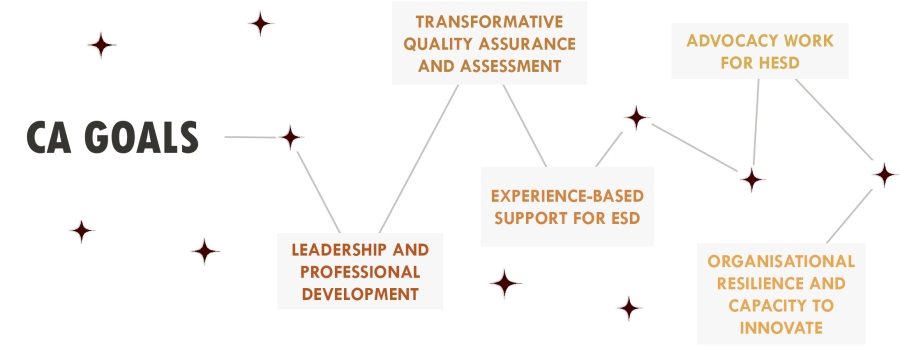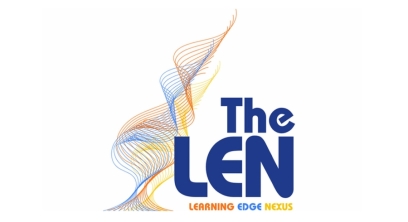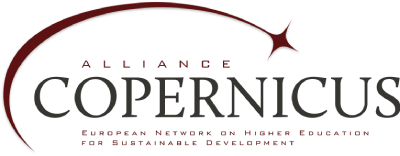Vision
The COPERNICUS Alliance will be the leading European network helping people and institutions in a higher education environment to creatively address the challenges of tomorrow in a collaborative way, to jointly build the knowledge and competences needed for global sustainable development, and to actively engage with policy-makers and community stakeholders.
Mission
The COPERNICUS Alliance (CA) aims to enable European higher education institutions and their partners to jointly identify challenges in higher education for sustainable development (HESD) and spearhead development of processes, tools, and knowledge to address these challenges from a whole-institution perspective. The CA provides a platform and organises events where its current and future members can share resources and co-develop innovative education for sustainable development initiatives. It provides "Cooperation Funds" for members’ networking efforts and supports joint HESD proposals through advice and alliances. The CA also promotes engagement with policy-makers and community stakeholders at the European and global levels and regularly celebrates members’ ambassador activities. The CA resolutely commits to reducing the ecological footprint of its activities.
Values
Respect, commitment, and collaboration are deemed the highest values of the CA.
- Respect underpins members’ interactions and collaboration. Our members greatly appreciate the diversity of the CA community and the inspiration they get from exchanging.
- CA members commit to walk the talk, guided by a holistic perspective of HESD and the Agenda 2030. This commitment is supported by the possibility of exchanging with other people and institutions, and engaging in common activities.
- Collaboration is the mode of work of the CA community, who shares knowledge and resources, seeks to increase the impact of their work together, and find common solutions and funding for projects.
Context and purpose
An increasing number of higher education institutions in Europe acknowledge the urgent need for rapid and radical transformation towards sustainable development and agree that higher education has an important role to play in this process. The question is: How can this role be assumed and what values should lead the process? Four stumbling blocks need to be addressed to answer the question.
First, value-based research and teaching are often believed to be problematical by academics, who consider freedom of thinking to be the highest good at a university; sustainable development is often perceived as an imposed norm and therefore rejected on principle.
Second, assessment processes are currently measuring what can be measured instead of what should be measured, and the entire institutional setup of higher education institutions relies on competition rather than on collaboration.
Third, activities at higher education institutions tend to be compartmentalised; while this is necessary to ensure expertise and efficiency in science, teaching, and operations, it also hampers the systemic, interdisciplinary, and inter-operational approach needed for sustainable development and for moving from "knowing to doing".
Once these three stumbling blocks have been addressed, a fourth stumbling block remains: Are we able to take up the challenge of teaching and researching with sustainable development in mind? This requires a focus on competences in addition to knowledge, as well as a shift from teaching to learning – which lecturers find challenging, in particular given the notorious lack of professional development to support these changes towards education for sustainable development.
The UN Decade of Education for Sustainable Development and ensuing Global Action Programme on ESD have been instrumental in broadening the call for change in higher education. This call was expressed already very early on in the history of sustainable development and was eventually translated by concerned European university rectors into the 1993 COPERNICUS Charta, originally signed by 328 universities – the CA’s founding document (read more about CA history). The CA is indebted to this framework and to related policy action both at the global and the European level. It is committed to cooperative action that helps its members take up the challenges of HESD, in the spirit of the goals formulated in Agenda 2030. The present Action Plan is therefore framed to address the four stumbling blocks mentioned above in the context of the global and European debates on HESD, and with the principles of a whole institution approach and the "five Ps" of Agenda 2030 in mind.
Action Plan: Strategy and Goals
Goals for CA activities have always been the result of a bottom-up process, with members contributing in a substantial way on different occasions. Five priorities have been identified which characterise the CA’s unique strengths and important areas of action. The first two are thematic priorities (Goals 1 and 2), the third epitomises the CA’s mode of operation and commitment to sharing resources and learning (Goal 3), the fourth confirms the CA’s involvement in European and global policy work (Goal 4), and the fifth characterises the CA’s operational needs as a learning organisation (Goal 5):
- Goal 1: Promote ESD leadership and professional development
Professional development is a prerequisite for effective curriculum change and innovation in higher education. To date most staff development offers have aimed only at improving teaching practices. The CA believes that there is a need to explore the type of capacity-building processes that are contributing to changing teaching and learning cultures in higher education; there is also a need to provide opportunities for educators to develop academic leadership skills and abilities to influence and change the way the higher curriculum is shaped, taking into account existing networks in the field.
- Goal 2: Develop transformative quality assurance and assessment for the SDGs
The CA seeks to scale up engagement with sustainable development in higher education by connecting sustainability with systems for quality assurance and quality enhancement and by exploring how existing systems can be transformed to ensure quality and cooperation rather than quantity and competition. The CA promotes whole-institutional approaches by supporting universities and colleges engaging in reframing sustainability as part of their quality goals and processes.
- Goal 3: Foster experience-based support for ESD
The CA seeks to support members’ sustainability work by making available tools and resources and by encouraging the sharing of good practices in the field of ESD. In the next two years, we plan to improve our communication tools and further promote the resources, projects, and activities developed by members. The CA also seeks to walk the talk by combining virtual and face-to-face conferences with the aim of reducing its carbon footprint and innovating in the organisation of sustainable events; this practice should be communicated as an example and best practice; in addition, CA members will also reflect on failures in order to learn from them.
- Goal 4: Conduct advocacy work for higher education for sustainable development
CA members expect the CA to engage in advocacy of HESD and become an important actor in Europe. In order to increase our influence across Europe and globally, the CA will engage its members meaningfully in representation tasks. It will also identify and create key strategic partnerships to inform policy and practice.
- Goal 5: Ensure CA’s organisational resilience, capacity to innovate, and ability to serve its members
The CA is a small network with modest resources to run its secretariat and develop key activities. In order to ensure our resilience, we must remain attractive and increase our capacity to innovate, to retain members, and to attract new ones. Identifying key selling points is an essential task for the network as well as raising funds for collaborative projects that can help support the secretariat.

Detailed objectives and specific actions are assigned to each of these five goals. (Quantitative) indicators allow to determine whether the goals have been achieved. Further details are outlined in the CA Action Plan, elaborated in 2019, that remains the main reference document.
Download COPERNICUS Alliance Action Plan 2019-2020







